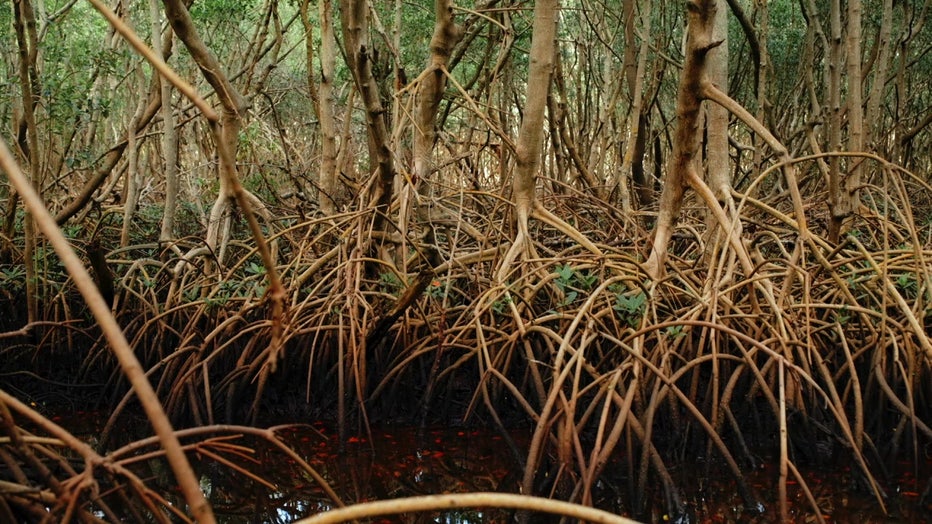Mangrove forest at Weedon Island Preserve offers glimpse into vital ecosystem
Mangrove forest in Pinellas County
Weedon Island Preserve visitors can explore the Mangrove ecosystem. The forests are all interconnected by waterways that are essential for Florida's fisheries.
ST. PETERSBURG, Fla. - In the heart of the Tampa Bay area lies the Mangrove ecosystem at Weedon Island Preserve.
The preserve is just north of St. Petersburg and known for its hiking trails and historical significance.

"Weedon Island's mangrove forests are all interconnected by waterways, most of them natural creeks, and some of them are man-made channels. But that network of interconnected waterways creates a vast area of thick mangrove forest," said Kendal Jackson, PhD at the University of South Florida.
READ: Himalayan singing bowls, therapeutic Nepalese tradition in St. Petersburg
The labyrinth of intertwined mangrove roots is a sanctuary for plants and animals that have seamlessly adapted to the distinctive habitat.
"Next time you’re out at Weedon Island Preserve, and you’re walking in the mangrove ecosystem, make sure that you stop, look around, and listen. You’ll observe a whole new world of wildlife and ecological interactions happening around you," said Jackson.

As visitors traverse this hiking trail, they find themselves surrounded by the vibrant ecosystem of the mangrove forest.
"First, you might notice wading birds and other coastal birds. So, if you look closely at the mangrove branches and mangrove trunks or even on the mud surface, you'll notice that the mangrove ecosystem is just full of invertebrate life," explained Jackson.
READ: Pinellas County man grows gourmet and medicinal mushrooms
These waterways also serve as vital nurseries for numerous game fish species native to Florida.

"Mangrove forests are incredibly important to Florida's fisheries, and something like 75% of game fish species and 90% of Florida's commercial fish species depend on mangrove ecosystems at some point during their life cycle," said Jackson.
Despite the challenges posed by the swampy terrain and dense mangrove roots, this trail offers a glimpse into a world rarely accessible to humans.

